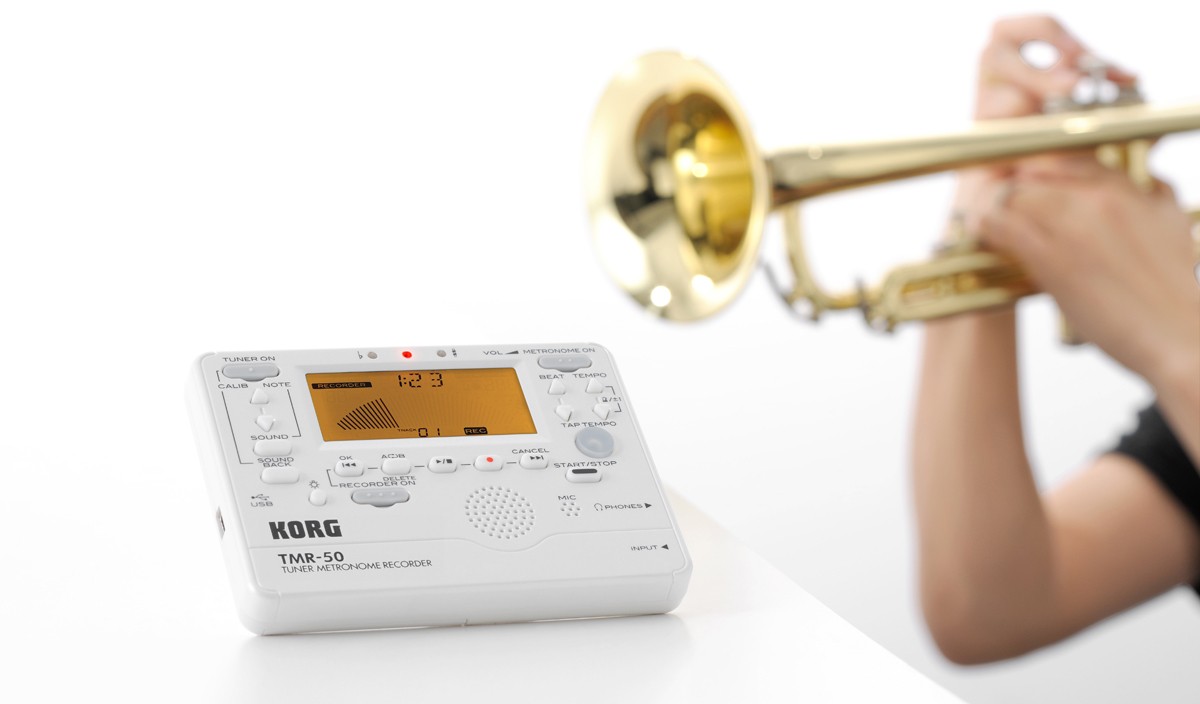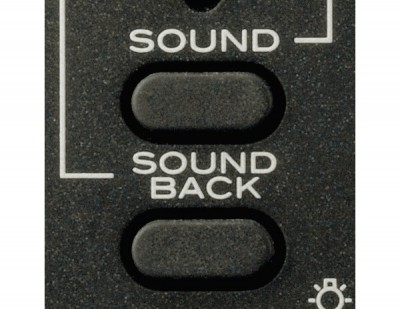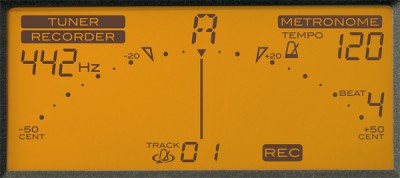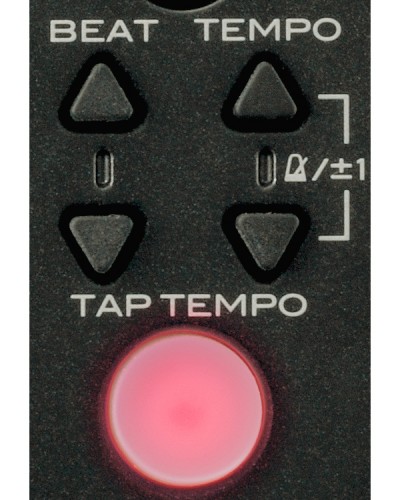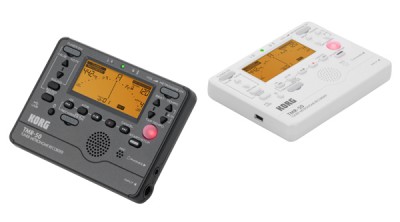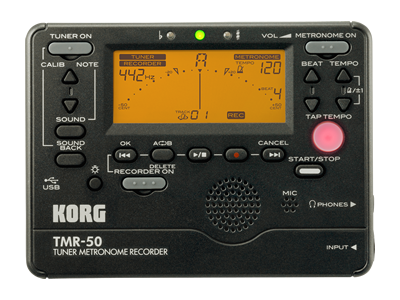Tuner Delivers Outstanding Functionality
Newly designed needle-style LCD meter with excellent response and wide detection range
The TMR-50 features extremely good response to audio input from wind and other instruments, and the redesigned meter display method allows the pitch to be accurately and instantly shown without any time lag. Wind players will no longer experience the problem of their pitch changing spontaneously before it can be displayed accurately; this ensures that you’ll be able to develop stable and drift-free pitch.
The detection range is extremely wide, extending from C1 (32.70 Hz) to C8 (4186.01Hz) which covers the note ranges of wind, string, and most other types of instruments. Even potentially difficult instruments that have a low pitch and numerous overtones can be tuned accurately, thanks to Korg’s proprietary high-precision technology. The built-in high-sensitivity mic also allows easy and accurate tuning of acoustic instruments such as guitar and ukulele; alternatively, you can use the CM-100L contact mic (separately sold) to send the vibrations directly to the tuner for even greater reliability.
The Sound Out Function
In addition to visual tuning using the meter, you can use the Sound Out function* to produce a reference tone from the internal speaker or headphones, and tune by ear. You can specify the reference tone in a three-octave range from C3 (130.81 Hz) to C6 (1046.50 Hz) which covers a wide variety of instruments.
*When using the recorder and tuner functions simultaneously, the tuner section will be usable only in Meter mode; the Sound Out function will not be available.



